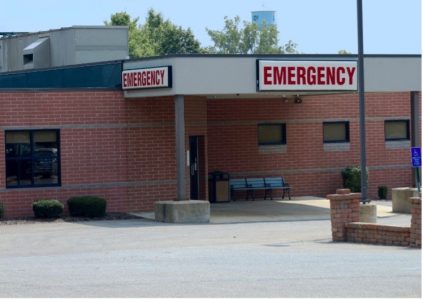Widgetized Section
Go to Admin » Appearance » Widgets » and move Gabfire Widget: Social into that MastheadOverlay zone
Advancing Health Equity for Rural America
The views expressed are those of the author and do not necessarily reflect the views of ASPA as an organization.
By Shone Hughes
November 15, 2024

Americans in rural communities continue to face major challenges accessing quality healthcare. According to the U.S Centers for Disease Control and Prevention, from January 2005 to December 2016, rural emergency room visits increased from 16.7 million to 28.4 million compared to urban emergency room visits that increased from 13.5 million to 22.5 million. Rural emergency room visits increased from 17 million in 2018 to 25 million in 2019. During the early period of the COVID-19 pandemic, emergency room visits slightly declined but the number of infectious related diseases increased.
Prior to the COVID-19 pandemic, the leading patient chief complaint for emergency room visits included stomach/abdominal pain, cramps, spasm followed by chest pain, fever, coughing and headache. On the surface, it appears that these emergency room visits were not urgent. In order to truly understand the lived experience of Americans in rural communities, one must appreciate the power of engagement, value empathy as well as the dignity and worth of the person.
By engaging with rural communities, one will first learn that rural America is not a monolith. Nonetheless, serious medical conditions are prevalent in rural areas. Most individuals and families are working class with a lack of access to quality primary care due to health insurance and proximity to healthcare providers. Many individuals in rural communities are aware that their condition such as stomach pain was likely a non-urgent matter. However, living in a food desert with limited finances for nutritious foods and over the counter medicine coupled with medical conditions, a drive and in some cases a walk to the emergency room becomes the best alternative form of healthcare.
It is also important to note that there are unfortunate situations when individuals visit the emergency room for what seems to be an upset stomach and later learn that their stomach pain was a symptom of an unknown life threatening medical condition. Having access to quality routine and preventive care improves the quality of life and saves lives.
Addressing Health Needs
There are opportunities to improve access to quality healthcare for rural communities. Though the number of uninsured in rural communities has decreased since the Affordable Care Act, being uninsured remains a barrier to healthcare. Nearly 3 million adults in rural America were uninsured in 2023. Advocacy is vital for access to health insurance coverage, particularly Medicaid coverage is necessary among low income individuals and families. Individuals and families with no or low income are eligible for Medicaid. Some rural areas have expanded Medicaid which reduced mortality. One of the goals of health insurance is to promote better health among all insured. In a perfect scenario, all insured will receive quality routine and preventive care with reduced cost sharing.
A growing body of evidence identified program and policy solutions to advance health equity in rural communities. One solution is addressing the physician shortage in rural areas through workforce programs such as providing incentives for primary care physicians to practice in resource shortage areas and medical student pipeline programs.
Another solution is valued based care such as the bundled payment model, a coordinated medical care arrangement in which several healthcare providers accepting Medicare, Medicaid and private insurance receive an incentive for coordinating care to a patient who is being treated by a group of providers for the same or related medical condition (s). The patient receives quality healthcare by a reduction or total elimination of errors and continuity of care. Value based care models reduce the cost of quality health care by reducing emergency room visits. The cost of quality health care is also reduced as duplicative screening and treatment decreases.
A well-designed value based care arrangement is one that embraces health equity. Value based arrangements advance health equity by supporting health care providers in their quest to improve performance indicated by improved patient health outcomes. In rural Pennsylvania, such value based arrangements prevented hospital closures in the wake of COVID-19. While additional data is needed to understand challenges of implementing value based models, the future of healthcare is value based care using Medicare, Medicaid and private insurance. By 2030, the Center for Medicare and Medicaid Services has set a goal to transition all Medicare beneficiaries into value based care models.
Author: Shone Hughes is an Assistant Professor in the College of Public Service at Tennessee State University. Shone’s research focuses on social equity, program evaluation, and health policy.


Follow Us!